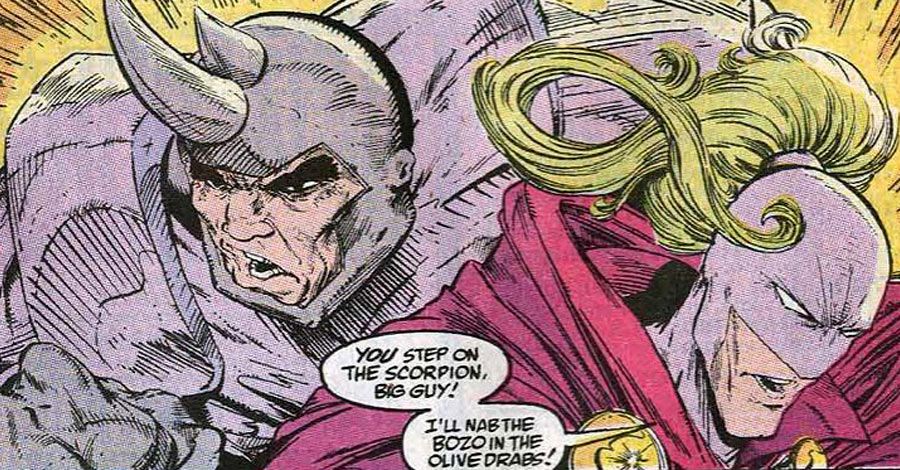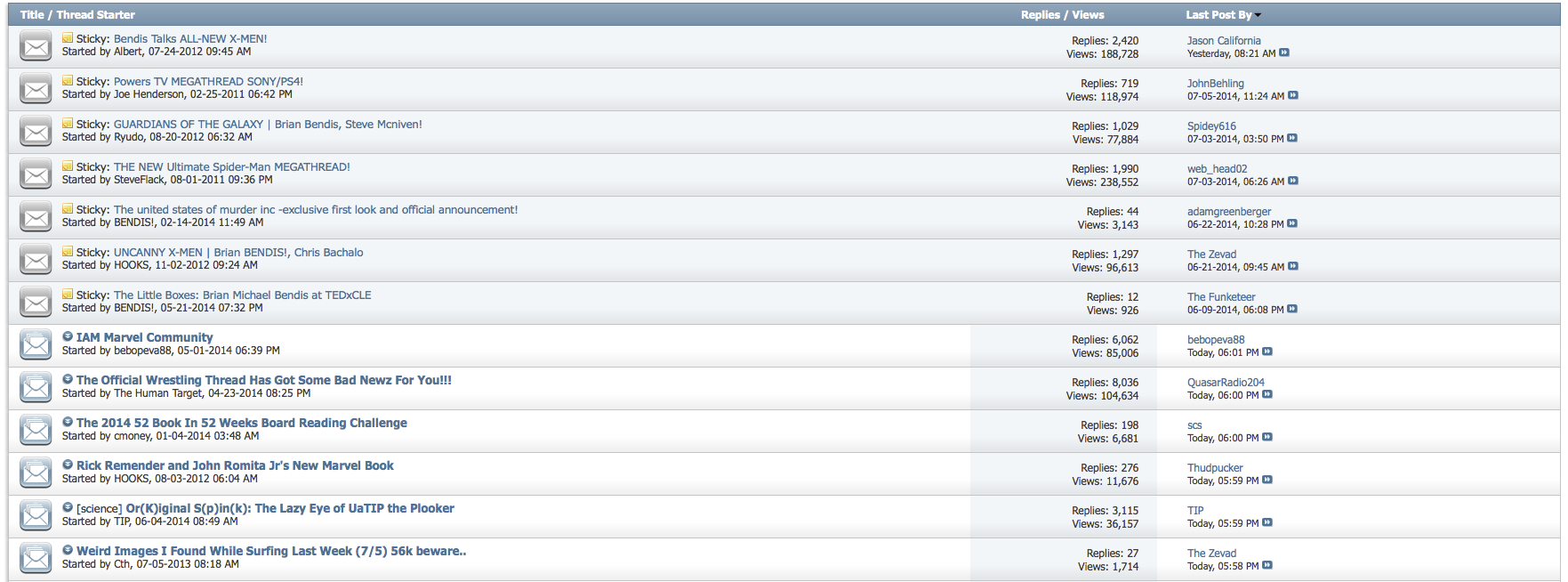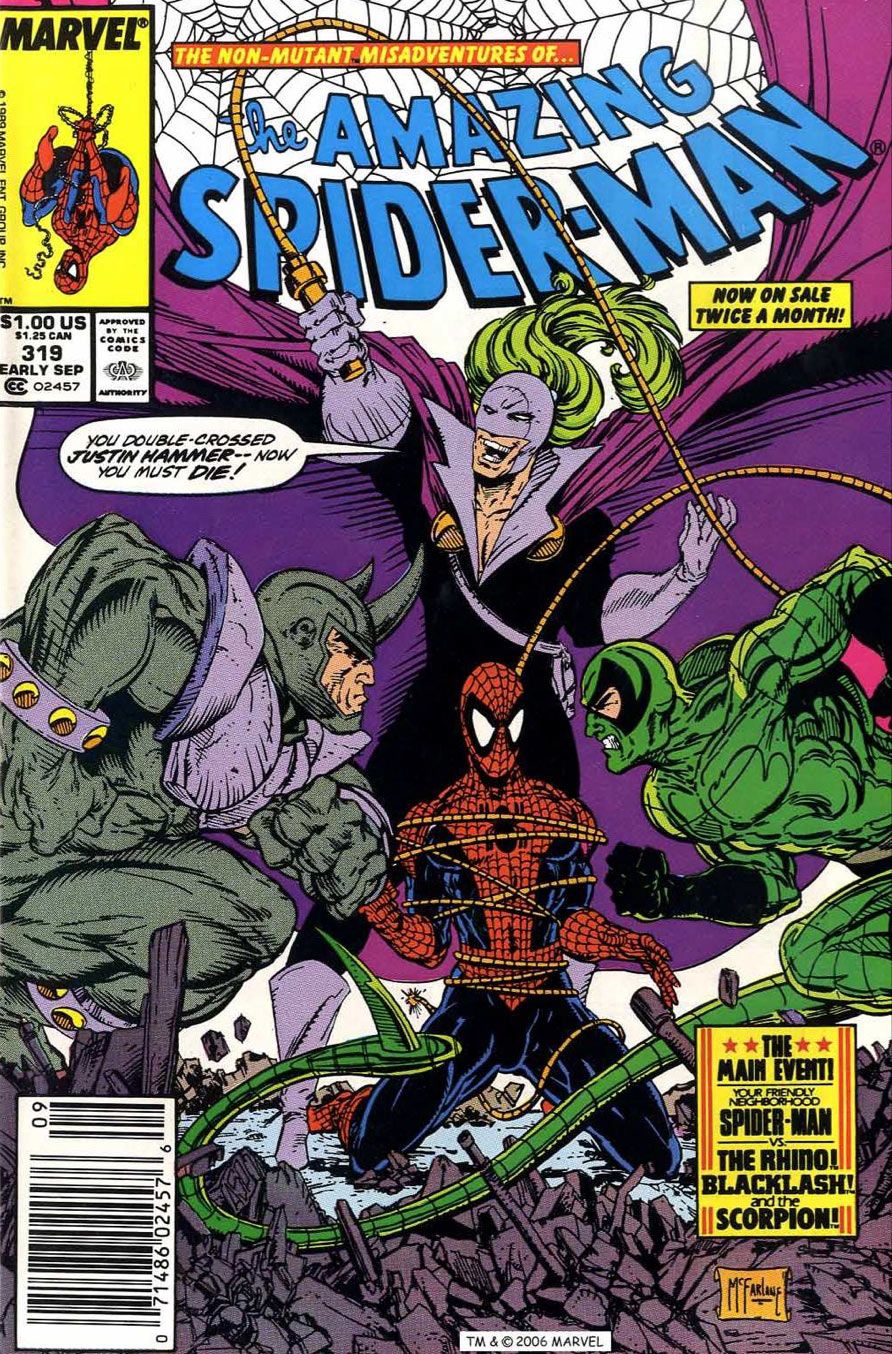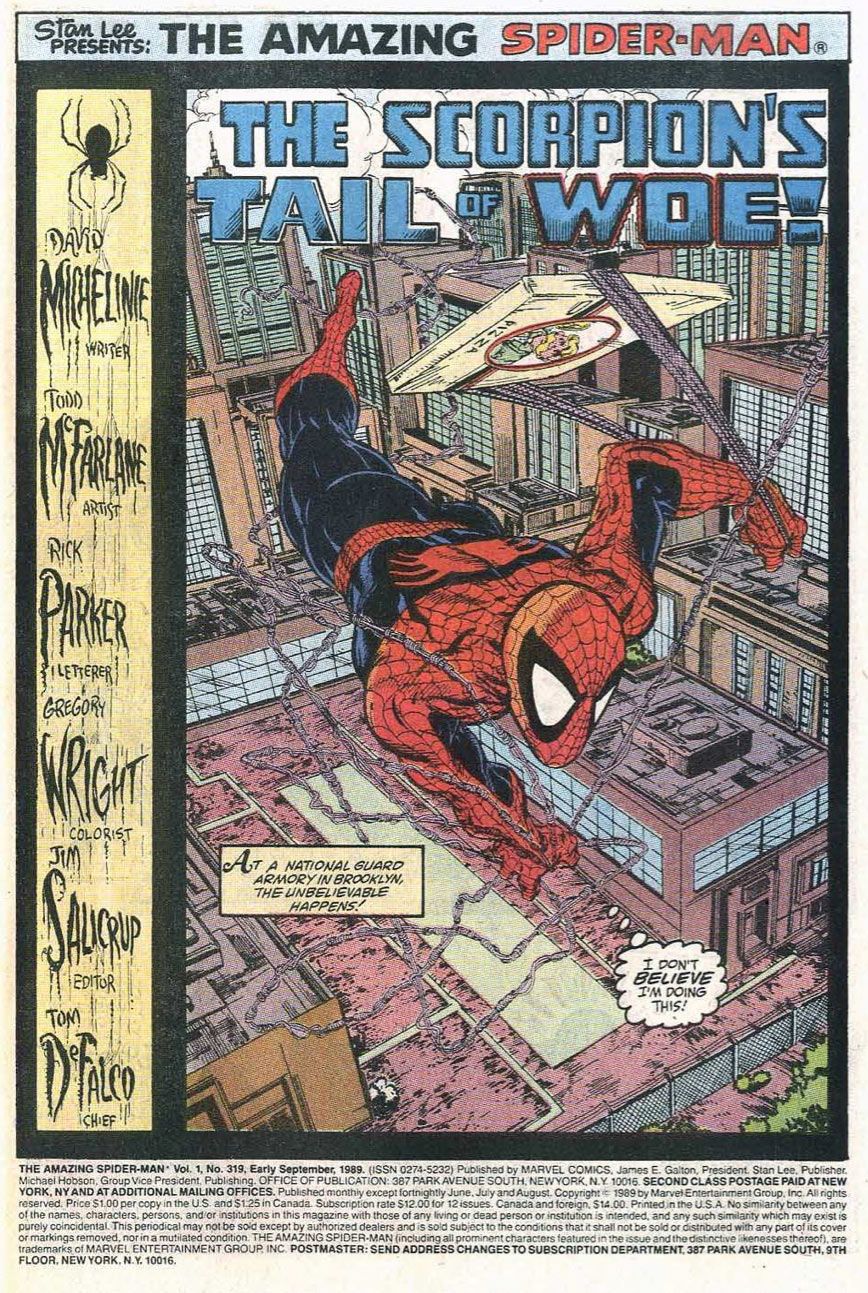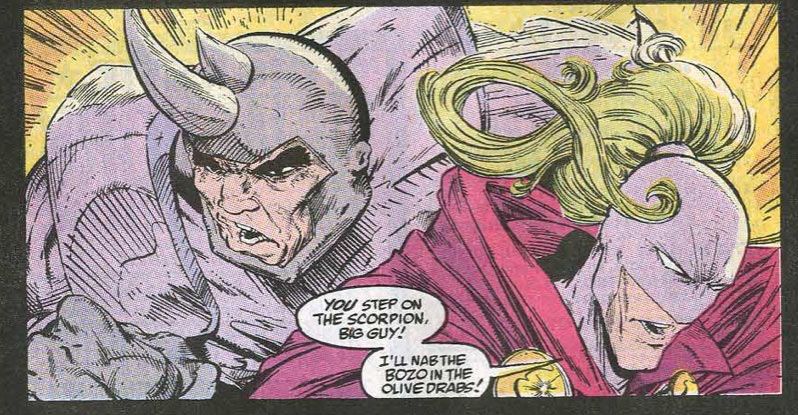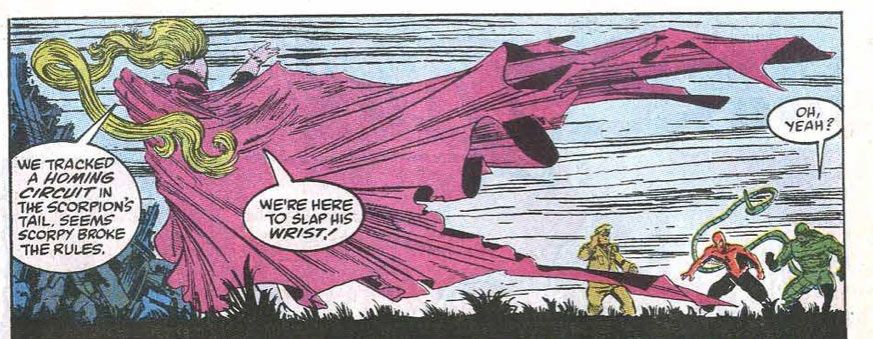FAREWELL TO THE BENDIS BOARD
The [Brian Michael] Bendis [Message] Board is now a thing of the past.
It's a testament to the good will Bendis built up over the years that there's not a shrill outcry over the destruction of a piece of comics history. When a website service, for example, goes under, it's expected that its users will be given some time (anywhere from a week to three months) to pull everything down that they might want to keep. When Warren Ellis closed down the WEF, he gave everyone some time to archive what they wanted. Still, there was a hue and cry to at least leave it up in read only mode so those conversations could be archived. That didn't happen, but at least people could save what they wanted.
I was a regular on the Bendis Boards for a time a few years back. I eventually moved away from it for much the same reason I moved off of the Warren Ellis Forums: The participants in the board tried too hard at times to act like their moderator. The tone of a message board with someone's name at the top will always match that person. People don't pick up on nuance or intelligence or thoughtfulness. They see, "Hey, he curses a lot and talks about Howard Stern," and so the board became too much attitude and too little of what I was looking for.
But, hey, that's just me. Lots of people had lots of fun. Lots of professional contacts were made. And now it's all gone. Sad day for comics fandom history, as it was when fanzines faded and APAs dried up and mailing lists faltered.
As always, the Internet evolves. It also has cycles. Newsletters are a growing thing now, for example, at a time when we're all supposed to be thinking email is dead and nobody will read more than a tweet. Microblogging (Twitter) and tumblogs (Tumblr) are relatively recent inventions, and I'm sure another new thing is just around the corner. The next generation will gather around a campfire of its own making. And then they'll tear it down for another.
It's also a sign of the maturation of the industry and of the Bendis Boards' fearless leader. When the boards started, he was a struggling artist barely printing his own comics. Now he's got a big family, a lot of comics to write, and Hollywood projects out the wazoo. Something had to give. It's amazing the Boards lasted as long as they did. Killing it this suddenly was probably a good move. Giving the population time to post in misery, distress, or anger about itself for the remaining time would have done nobody any good.
In the meantime, if you want to hear from Bendis, his Tumblr site is always entertaining.
"THE AMAZING SPIDER-MAN" #319: "The Scorpion's Tale of Woe"
Jonathan Hammer is not taking kindly to Scorpion breaking the deal they two had. So he sends two of his operatives out, namely Rhino and Blacklash.
Just when New Comic Reader Me might have felt overwhelmed with learning all these new characters in the last issue, along come two new villains (for me), with The Rhino and Blacklash. Spider-Man against three villains in one issue? It was a lot of value for the money on a one dollar cover price.
Re-reading the story today, I find myself admiring David Michelinie's craft. While the writing so often seems labored, on the nose, and not particularly inspired, I also recognize that it serves the purpose of the comic very well. As the flagship Spider-Man comic of the day, this is the title that needed to be new reader friendly every month while giving Spider-Man a new bad guy to fight all the time. Pacing was crucial. Every issue had to be self-contained in some way while giving readers reasons to look for the next. You couldn't assume someone was picking up every issue at the newsstand, so built-in recaps were a must.
Michelinie found ways to fit all of that in while still advancing the story, no matter how thin the plots might feel to a modern reader today. It helped to have Todd McFarlane's art to rely on, of course. Any bland scene could be spiced up with McFarlane's pencil. It's something McFarlane talked about not liking, but was necessary. In the "Art of Todd McFarlane" book, he talks about how his job included making banal scenes seem interesting. He took it as a challenge to pick a new angle, but it wasn't nearly as much fun as drawing Spider-Man in costume. All of those pages I keep referring to in this series of Spider-Man recapping the plot while swinging through the city? They get the job done in a way that a reader will still be attracted to the page, even if their mind wanders a bit.
On the other hand, the final battle for this issue is a little lacking in one area. It happens in Queens, at the site of the 1964 World's Fair, yet McFarlane manages never to draw any part of the World's Fair mentioned in the dialogue and caption boxes. He keeps his "camera" so narrow that Michelinie is forced to narrate what's happening through the dialogue. Even in an age before Google Images, finding reference shots of the event wouldn't have been hard. Whether this was a time-saving move or a simplification move on McFarlane's part, I don't know, but it's laughably noticeable on the final pages.
The big battle also leaves Spider-Man out of control. There are too many people flying about. Spider-Man needs to focus on keeping the General who the Scorpion had taken hostage safe and out of the way. He fought Blacklash one on one and arguably lost, only to be saved by chance and Rhino's incompetence, plus the sounds of sirens coming. This isn't one of those times when Spider-Man uses science to out-think his enemies. This is more a case of Spider-Man surviving until the end and doing a dance in the meantime. The important thing is, he kept the un-powered human alive, which is what he wanted to do. That Blacklash and Rhino got away is not a big deal. Scorpion -- the guy who started this whole thing -- got caught, and his powerful new tail was taken away from him. (Literally, Rhino ripped it off. Ouch.)
McFarlane paid plenty of attention to Mary Jane, though. That's the other thing we learned in this issue: Mary Jane is the master of double-sided tape. She also has very small feet.
From the soap opera side of the comic, this is also the issue where Mary Jane finally learns that Jonathan Caesar is behind her career downswing. Though she has to be told this from her old hair and make-up friend, Sandy, she insists to Peter that it's her fight and she'll handle it by herself. I think this might be a case to better swallow one's pride, but to each her own. It's not like Spider-Man could fix this one with his fists, though.
As it turns out, he has other things to fix first:
Next issue: We begin the bi-weekly summer slog with the "Assassin Nation Plot" storyline. It's time for Paladin and Silver Sable and Solo and Sabretooth!
PIPELINKS AND ONE-LINERS
- It's official: The buyer of the $3.2 million dollar copy of "Action Comics" #1 is the same guy who appeared on CNBC with me last month and said he never thought the book would beat the Nicolas Cage copy at $2 million. Not only was he wrong, but he brought it upon himself.
- There are lots of stories of costumed characters in Times Square getting into fights, leading to "fun" headlines about how Spider-Man and Batman are brawling on the streets. For the life of me, I don't understand how the owners of these trademarks haven't cracked down on these costumed characters. They're not doing their IP any good.
- In 1947, "Life" magazine had comic strip artists draw their strips' stars -- blindfolded. The results are predictably rough, but entertaining.
- A slideshow of Carl Barks' oil paintings.
- Good news last week, as comiXology launched DRM-free comics from another 14 publishers, including Fantagraphics, Oni, IDW, and Valiant. I wish this would put pressure on Marvel and DC to do the same, but realistically there's no competition to speak of here. Marvel and DC own 80% of the market they pay attention to. They're not going to lose sales over DRM in enough numbers to justify knocking over that wall. We are at least another baby step closer in some way to this being the norm, though.
- Have any comic book artists become photo-ref dependent and then gone back to a more cartoony style? It seems to me that this is a one-way street. Once an artist becomes reliant on photo reference, he can't go back.
- I've watched a lot of artists drawing digitally recently, and I'm still amazed by those who do it with just a Wacom tablet. I can understand the ability to draw on a Cintiq, but the break between drawing on a tablet and seeing those lines form on a screen is just too much for my abilities, I'm afraid. I'm sticking with pen and paper until I'm independently wealthy and can buy my own Cintiq for play purposes.
- Neal Stephenson's Kickstarter project to fund a video game is now completed: The project has run out of money, been canceled, and nothing will ever be released. Stephenson raised a half million dollars and accomplished nothing with it. Sad. Kickstarter is an awesome thing, but there is still risk involved. Unless it's Jimmy Palmiotti. There's zero risk with his Kickstarter projects.
- I could stretch this to make it comics-related, but I won't. Instead, let's just revel in the glory of Nintendo's 125th birthday.
Twitter || E-mail || Instagram || Pipeline Message Board || VariousandSundry.com || AugieShoots.com || Original Art Collection || Google+

